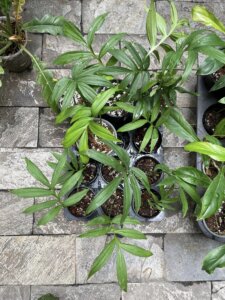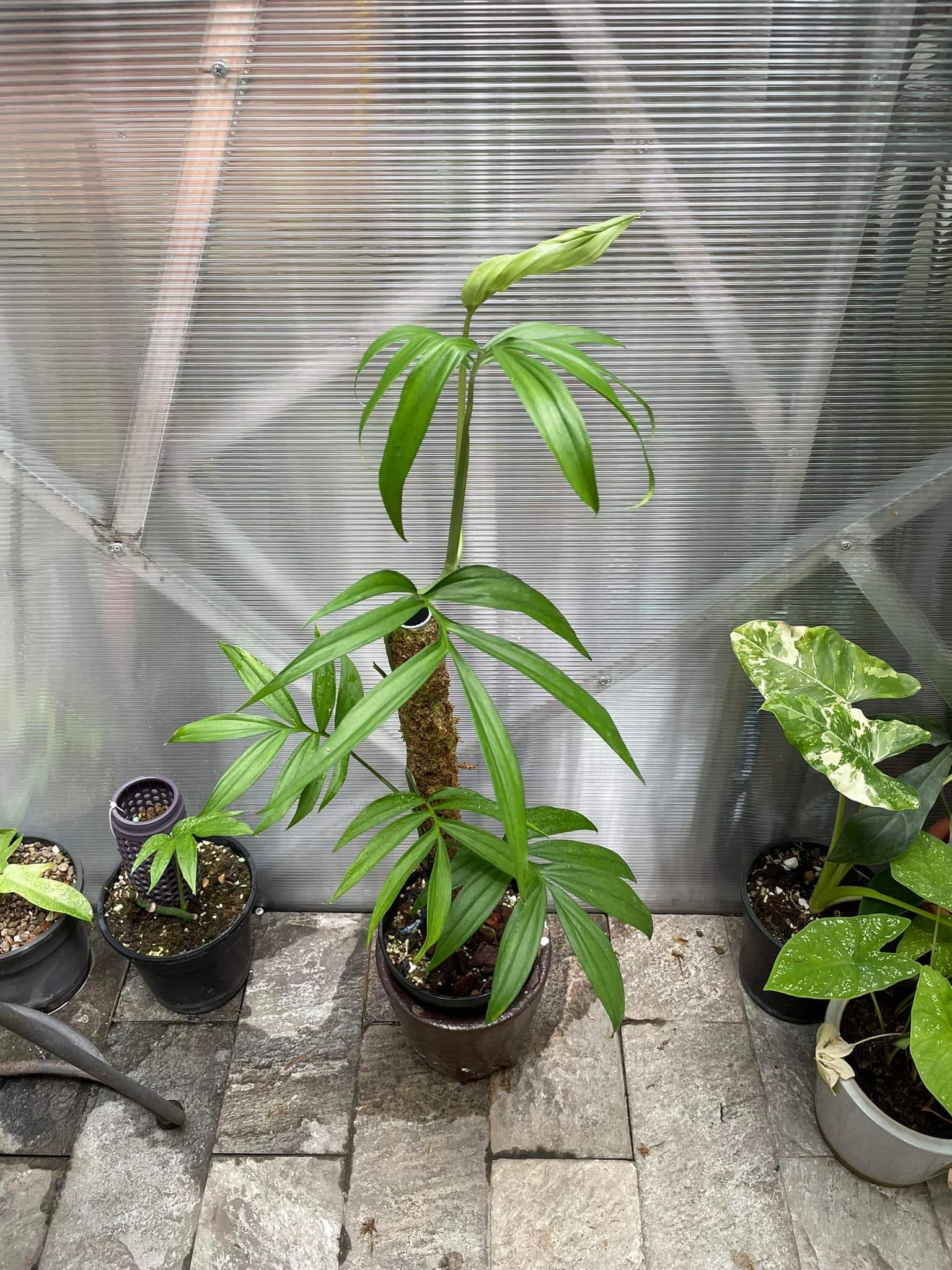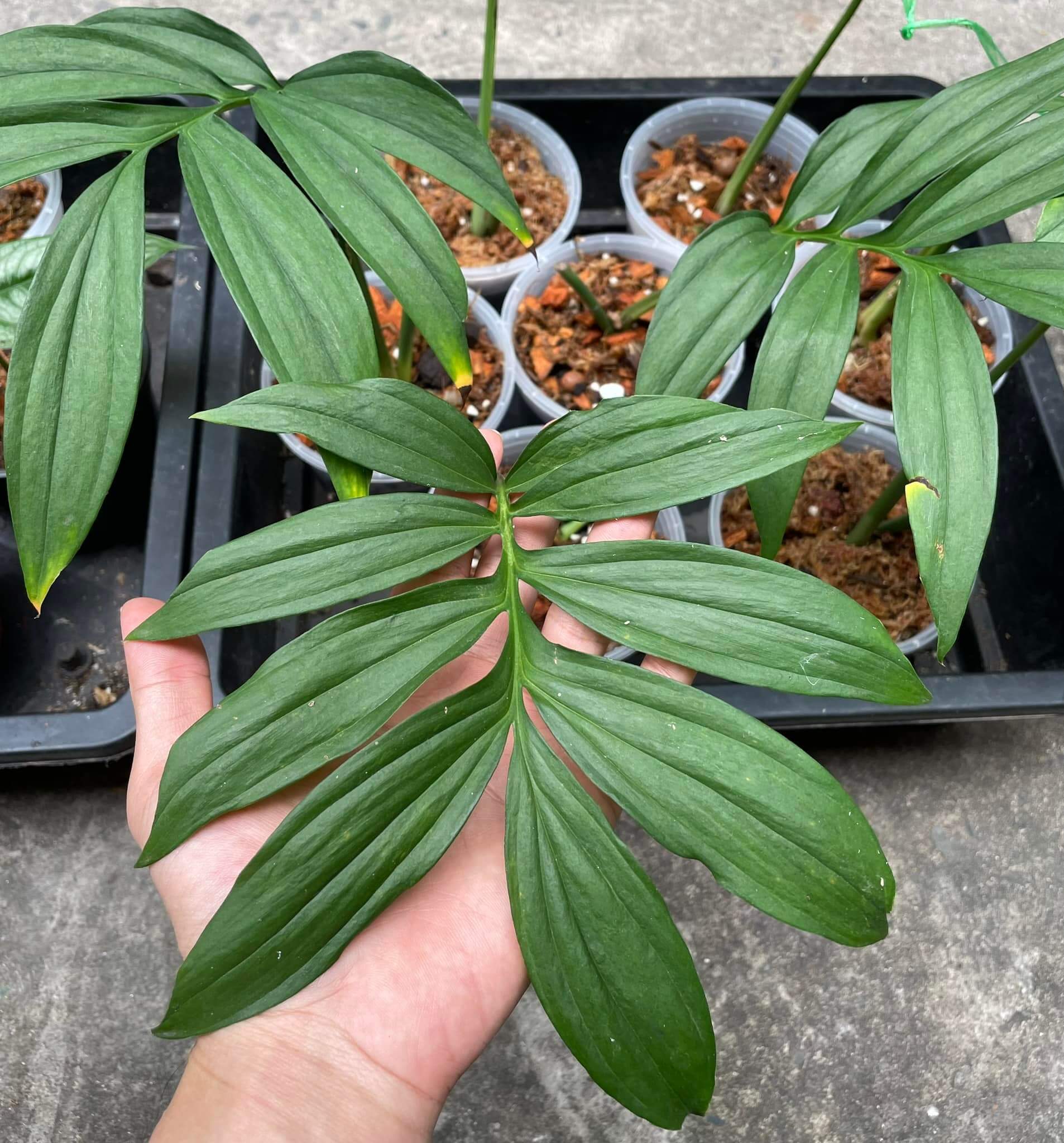Basic Information
Monstera Subpinnata, a stunning species native to Ecuador, is cherished for its unique fenestrated leaves and climbing growth habit. It’s ideal for plant enthusiasts seeking a tropical vibe in their indoor spaces. Unlike other Monstera varieties, Subpinnata showcases slender, elongated leaves that bring a delicate elegance to any room.



Light
Monstera Subpinnata needs a medium to bright, indirect sunlight. Too much direct sun will scorch its leaves, while too little light will cause it to grow sparsely. Place it near an east-facing window for gentle morning light and avoid harsh afternoon rays. Supplement with grow lights if natural light is insufficient. Grow lights can help maintain the plant’s vibrant foliage.
Water
Watering habits for Monstera Subpinnata should reflect its natural rainforest environment. The soil should be kept consistently moist but not waterlogged. During active growth periods in spring and summer, water when the top few inches of soil dry out. In winter, reduce the frequency as the plant enters a dormant phase. Overwatering can lead to root rot, so ensure your pot has adequate drainage and consider using a moisture meter for precise watering.
Soil
The ideal soil mix for Monstera Subpinnata should be rich, well-draining, and maintain a neutral pH. A mix of cactus soil, peat moss, and perlite offers the right drainage and moisture retention balance. This combination supports healthy root growth and oxygen flow, which is crucial for preventing root diseases. Regularly amending the soil with organic matter can boost nutrient content and enhance plant health.
Temperature
Monstera Subpinnata thrives in warm conditions as a tropical plant, preferring temperatures between 65-80°F (18-27°C). Protecting the plant from cold drafts and sudden temperature changes is essential. During winter, keep it away from cold windows and ensure the temperature doesn’t drop below 60°F (15°C), as cold stress can impede its growth and vitality.
Humidity
Monstera Subpinnata is a houseplant that requires more humidity than other commonly grown plants. It thrives in environments with an average or high humidity level of over 90 percent. This can be difficult to achieve in dry indoor settings, but you can use humidifiers, mist the plant, or place it on a pebble tray to help boost humidity. Placing the plant in naturally humid rooms like bathrooms or kitchens can also be helpful. Low humidity can cause the leaves to have dry, brown edges, so it’s important to maintain adequate moisture in the air.
Fertilizer
During the spring and summer growing seasons, Monstera Subpinnata benefits from regular fertilization. A balanced fertilizer with an N-P-K ratio of 5-2-3 is ideal to support root and stem development. Fertilize the plant every other watering in the fall and stop during winter to align with its natural growth cycle.
Growth Rate
Monstera Subpinnata is known for its rapid growth, often requiring repotting annually. Its vigorous root system and fast development make it essential to provide ample space for expansion. Choose a pot 2-3 inches larger than the previous one and ensure it has good drainage to accommodate the plant’s growth needs.
Pet Safety
The sap of Monstera Subpinnata is toxic if ingested, posing a risk to pets and humans. Keep the plant out of reach to prevent accidental consumption, especially in households with curious pets or young children.
Grow in Semi-Hydro
- Monsteras, known for their robust growth and iconic split leaves, flourish in semi-hydroponics systems like LECA/Pon, thanks to their adaptive root systems and love for moisture.
- Transitioning Monstera to semi-hydroponics is effective with a Nutrient Stagnant Wicking (NSW) setup, ensuring a stable and efficient growth environment.
- In LECA/Pon, Monstera roots quickly adjust, overcoming any initial challenges with root adaptation in the NSW system.
- A nutrient mix with a concentration of about 800-1000ppm is ideal for fertilizing Monsteras in semi-hydro setups.
- Monsteras are adaptable to various temperature and humidity conditions, making them suitable for growth in diverse indoor environments.
- Ongoing care includes regular monitoring of the water level in the reservoir and periodic flushing of the system to promote healthy and continuous growth.
Tips
- Ensure consistent soil moisture without overwatering.
- Provide bright, indirect light, adjusting position seasonally.
- Use a well-draining, nutrient-rich soil mix.
- Maintain a warm, stable indoor temperature.
- Increase humidity with humidifiers or pebble trays.
- Apply balanced fertilizer regularly in the growing season.
- Repot annually to support rapid growth.
- Keep away from pets due to toxicity.
- Monitor for pests and treat as necessary.
Monstera Subpinnata is an exquisite, fast-growing tropical plant that uniquely touches indoor gardens. By providing the right balance of light, moisture, soil conditions, and humidity, along with mindful fertilization and repotting practices, this plant can thrive and bring a lush rainforest feel to your home.
Happy planting! 🌱


